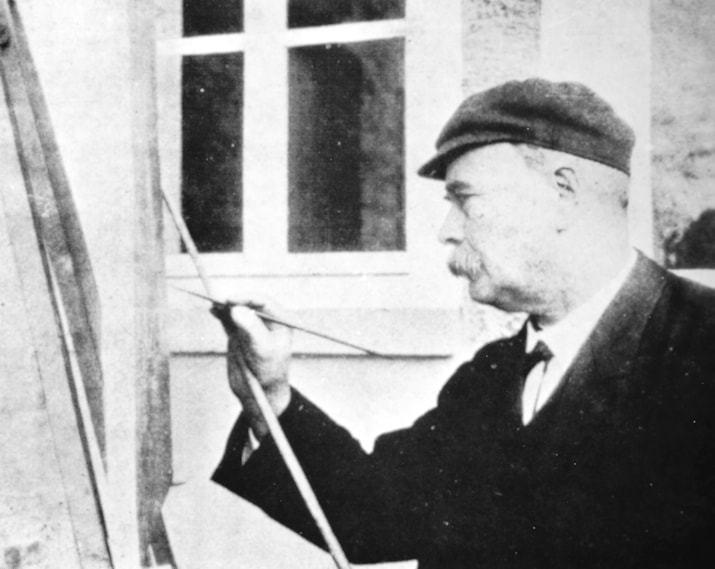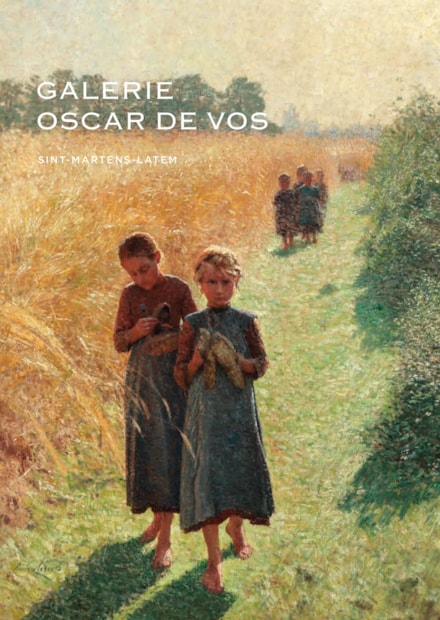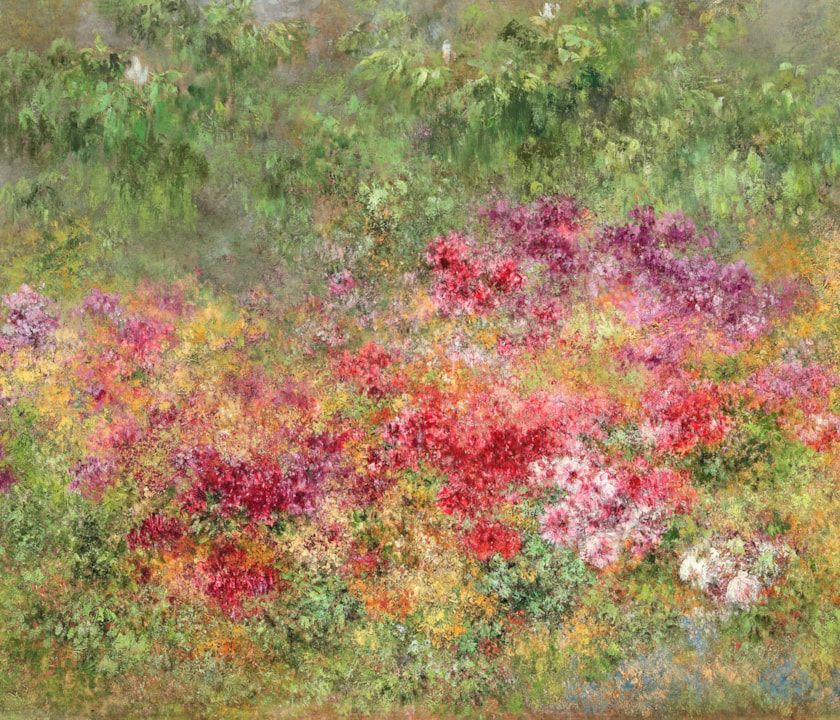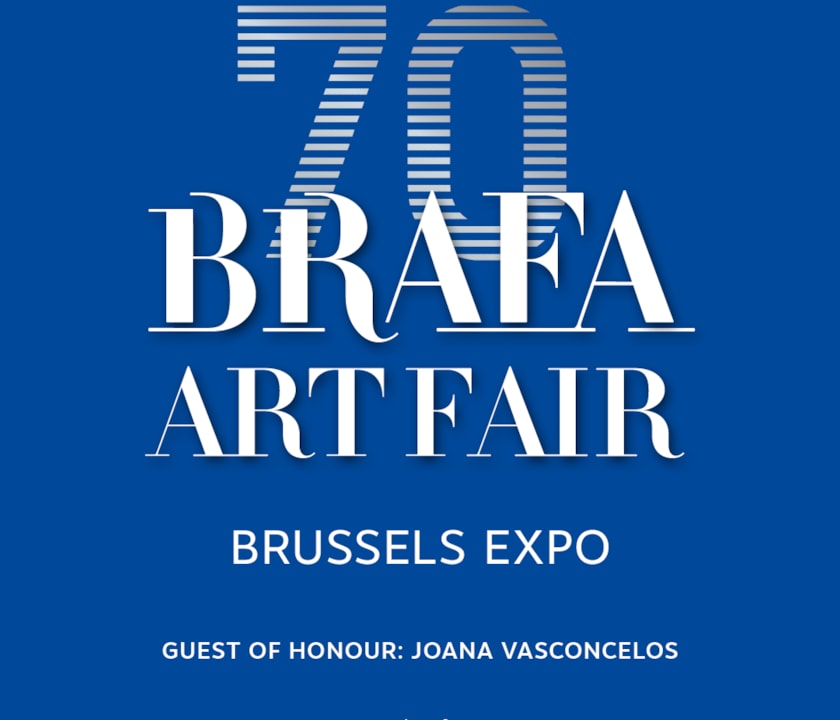Albijn Van den Abeele
(1835 - 1918)

Albijn Van den Abeele
(1835 - 1918)
Van de beroemde Latemse kunstenaars was Albijn (Binus) van den Abeele de enige die in het dorp geboren werd. Zijn sociale engagement zette hem reeds op vroege leeftijd aan om zijn dorpsgenoten te onderwijzen. Op vrijwillige basis gaf hij les aan de plaatselijke parochiale zondagsschool. Maar zijn ambities lager verder. Reeds in 1859 liet hij een eerste novelle in feuilletonvorm verschijnen in een Gentse krant. Ook in zijn volgende geschriften zou hij de sociale wantoestanden op het platteland aanklagen. Het begrip volksverheffing was nooit veraf. Anderzijds ontpopte hij zich tot een gedreven amateur-historicus, waarbij zijn aandacht ging naar de geschiedenis van Sint-Martens-Latem en Deinze. Van den Abeeles literaire stijl kaderde in de romantisch-realistische traditie, en in wezen was hij een product van de literaire heropleving die Hendrik Conscience in gang zette.
Via zijn literaire en historische geschriften kon Van den Abeele steunen op een brede vriendenkring. Reeds in de jaren 1860 ontwikkelde zich rond Binus’ huis aan de Knok te Latem een kunstenaarskring, die o.m. bestond uit de schilders Xavier De Cock, Jozef Pauwels en Felix Cogen, de oom van Anna De Weert. Toen reeds leidde Van den Abeele kunstenaars naar het dorp. In 1860 kwam Xavier De Cock bijvoorbeeld door toedoen van Van den Abeele aan de Vierschaar te Deurle wonen.
Ook in de dorpspolitiek speelde hij een belangrijke rol. Gemeenteraadslid vanaf 1863, schepen in 1867, werd hij in 1869 burgemeester van Sint-Martens-Latem, een taak die hij tot 1876 vervulde. Onverwacht nam hij toen afscheid van de politiek, en werd hij gemeentesecretaris van Latem en Afsnee. Ongeveer gelijktijdig ontluiken de eerste artistieke ambities.
Binus had een neus voor nieuwe contacten. Reeds in 1883 raakte hij bevriend met Emile Claus, die zich pas een jaar eerder in Astene, even stroomopwaarts van Latem, vestigde. Wellicht introduceerde Van den Abeele ook Xavier De Cock in Villa Zonneschijn, het woonhuis van de kunstenaar. De camaraderie tussen Van den Abeele en Claus zou zeker tot 1895 standhouden; samen met De Cock was Claus getuige bij het huwelijk van Binus in 1885. Na zijn huwelijk betrok Van den Abeele een statige woning aan de Latemstraat. Naderhand deed het internationale succes van de Astenaar Van den Abeele terugschrikken. Door zijn huwelijk maakte Claus de facto deel uit van de Franstalige hogere burgerij, een kring die voor de flamingant Van den Abeele onbekend terrein was. Weliswaar introduceerde ook Claus vrienden als Camille Lemonnier, maar het blijft toch opmerkelijk dat het contact met de Astenaar verminderde, naarmate een nieuwe generatie kunstenaars in Latem binnensijpelde.
Het is bekend dat Binus hemel en aarde verzette om Valerius De Saedeleer naar Latem te lokken. Opmerkelijk des te meer daar De Saedeleer in een artistieke crisis verkeerde en pas na de eeuwwisseling zijn weg zou vinden en een grote renommee opbouwen. In 1892-1893 verbleef het gezin De Saedeleer eerst in Afsnee, naderhand in Sint-Martens-Latem. De rusteloze zwerver zou al snel terug naar Gent trekken, maar keerde in 1898 naar het dorp terug, opnieuw onder invloed van de gemeentesecretaris. En in zijn zog zou eerst George Minne volgen, en dan Karel en Gustave van de Woestijne en Jules de Praetere. Op die manier kreeg de eerste groep van Sint-Martens-Latem vorm, onder het goedkeurende oog van Albijn van den Abeele. Feit is dat al deze kunstenaars een grote bewondering hadden voor het naïeve, het ontwapenende karakter van Binus schilderijen. In zijn werk zagen ze hun zoektocht naar authenticiteit verwezenlijkt. Ook bij een tussenfiguur als Albert Servaes had de schilderende gemeentesecretaris een grote invloed. Zelfs voor de jongste generatie die zich vanaf 1905 in het dorp verzamelde – Gustave De Smet, Constant Permeke en Frits Van den Berghe – had Van den Abeele zijn belang. En ook latere generaties kwamen in de ban van de kunstenaar. De jonge Hubert Malfait bijvoorbeeld omschreef Binus als “een groot artiest. Hij heeft sparrebossen geschilderd waardoor ge kunt wandelen.” Albijn van den Abeele was zeker de stamvader van de Latemse groep, en wist de opeenvolgende generaties kunstenaars in het dorp te boeien.
Het begin van de Eerste Wereldoorlog vormde voor Van den Abeele het einde van een gelukkige tijd. Een voor een had hij zijn vrienden-kunstenaars zien vertrekken, en nu, plots, zag hij zichzelf vereenzaamd in zijn geliefde dorp. De wapenstilstand mocht Albijn van den Abeele nog meemaken. Op 16 november 1918 stierf de kunstenaar in zijn huis aan de Latemstraat.
Via zijn literaire en historische geschriften kon Van den Abeele steunen op een brede vriendenkring. Reeds in de jaren 1860 ontwikkelde zich rond Binus’ huis aan de Knok te Latem een kunstenaarskring, die o.m. bestond uit de schilders Xavier De Cock, Jozef Pauwels en Felix Cogen, de oom van Anna De Weert. Toen reeds leidde Van den Abeele kunstenaars naar het dorp. In 1860 kwam Xavier De Cock bijvoorbeeld door toedoen van Van den Abeele aan de Vierschaar te Deurle wonen.
Ook in de dorpspolitiek speelde hij een belangrijke rol. Gemeenteraadslid vanaf 1863, schepen in 1867, werd hij in 1869 burgemeester van Sint-Martens-Latem, een taak die hij tot 1876 vervulde. Onverwacht nam hij toen afscheid van de politiek, en werd hij gemeentesecretaris van Latem en Afsnee. Ongeveer gelijktijdig ontluiken de eerste artistieke ambities.
Binus had een neus voor nieuwe contacten. Reeds in 1883 raakte hij bevriend met Emile Claus, die zich pas een jaar eerder in Astene, even stroomopwaarts van Latem, vestigde. Wellicht introduceerde Van den Abeele ook Xavier De Cock in Villa Zonneschijn, het woonhuis van de kunstenaar. De camaraderie tussen Van den Abeele en Claus zou zeker tot 1895 standhouden; samen met De Cock was Claus getuige bij het huwelijk van Binus in 1885. Na zijn huwelijk betrok Van den Abeele een statige woning aan de Latemstraat. Naderhand deed het internationale succes van de Astenaar Van den Abeele terugschrikken. Door zijn huwelijk maakte Claus de facto deel uit van de Franstalige hogere burgerij, een kring die voor de flamingant Van den Abeele onbekend terrein was. Weliswaar introduceerde ook Claus vrienden als Camille Lemonnier, maar het blijft toch opmerkelijk dat het contact met de Astenaar verminderde, naarmate een nieuwe generatie kunstenaars in Latem binnensijpelde.
Het is bekend dat Binus hemel en aarde verzette om Valerius De Saedeleer naar Latem te lokken. Opmerkelijk des te meer daar De Saedeleer in een artistieke crisis verkeerde en pas na de eeuwwisseling zijn weg zou vinden en een grote renommee opbouwen. In 1892-1893 verbleef het gezin De Saedeleer eerst in Afsnee, naderhand in Sint-Martens-Latem. De rusteloze zwerver zou al snel terug naar Gent trekken, maar keerde in 1898 naar het dorp terug, opnieuw onder invloed van de gemeentesecretaris. En in zijn zog zou eerst George Minne volgen, en dan Karel en Gustave van de Woestijne en Jules de Praetere. Op die manier kreeg de eerste groep van Sint-Martens-Latem vorm, onder het goedkeurende oog van Albijn van den Abeele. Feit is dat al deze kunstenaars een grote bewondering hadden voor het naïeve, het ontwapenende karakter van Binus schilderijen. In zijn werk zagen ze hun zoektocht naar authenticiteit verwezenlijkt. Ook bij een tussenfiguur als Albert Servaes had de schilderende gemeentesecretaris een grote invloed. Zelfs voor de jongste generatie die zich vanaf 1905 in het dorp verzamelde – Gustave De Smet, Constant Permeke en Frits Van den Berghe – had Van den Abeele zijn belang. En ook latere generaties kwamen in de ban van de kunstenaar. De jonge Hubert Malfait bijvoorbeeld omschreef Binus als “een groot artiest. Hij heeft sparrebossen geschilderd waardoor ge kunt wandelen.” Albijn van den Abeele was zeker de stamvader van de Latemse groep, en wist de opeenvolgende generaties kunstenaars in het dorp te boeien.
Het begin van de Eerste Wereldoorlog vormde voor Van den Abeele het einde van een gelukkige tijd. Een voor een had hij zijn vrienden-kunstenaars zien vertrekken, en nu, plots, zag hij zichzelf vereenzaamd in zijn geliefde dorp. De wapenstilstand mocht Albijn van den Abeele nog meemaken. Op 16 november 1918 stierf de kunstenaar in zijn huis aan de Latemstraat.
publicaties






